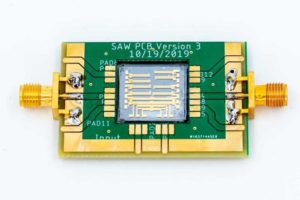engineering
Researchers predict age of T cells to improve cancer treatment
Manipulation of cells by a new microfluidic device may help clinicians improve a promising cancer therapy that harnesses the body’s own immune cells to fight such diseases as metastatic melanoma, non-Hodgkin’s lymphoma, chronic lymphocytic leukemi…
Silk moth’s antenna inspires new nanotech tool with applications in Alzheimer’s research
ANN ARBOR, Mich.—By mimicking the structure of the silk moth’s antenna, University of Michigan researchers led the development of a better nanopore—a tiny tunnel-shaped tool that could advance understanding of a class of neurodegenerative di…
Nanowire research at Stevens makes cover of Applied Physics Letters
An article by Stevens Institute of Technology researchers featured as the cover page of Applied Physics Letters Volume 98, Issue 7 represents a step forward in techniques for the arrangement of nanowires.
Professors Dr. Chang-Hwan Choi and Dr. Eu…
Tip sheet: Caltech researchers presenting at AAAS
At this year’s American Association for the Advancement of Science (AAAS) meeting in Washington, D.C., February 17 to 21, Caltech researchers will present topics ranging from solar and renewable energy solutions to the latest advancements in bioengi…
A new high-resolution method for imaging below the skin using a liquid lens
University of Rochester optics professor Jannick Rolland has developed an optical technology that provides unprecedented images under the skin’s surface. The aim of the technology is to detect and examine skin lesions to determine whether they a…
Planetary exploration robots to be featured on science program ‘WaveLengths’
TUCSON, Ariz. (February 18, 2011) — A University of Arizona College of Engineering researcher and his team who are developing intelligent robots for planetary exploration will be featured in a segment of an upcoming episode of the science program…
UCLA Engineering advance with new nanomaterials good news for next-generation electronic devices
In recent years, topological insulators have become one of the hottest topics in physics. These new materials act as both insulators and conductors, with their interior preventing the flow of electrical currents while their edges or surfaces allow t…
Clay-armored bubbles may have formed first protocells
Cambridge, Mass. — February 7, 2011 — A team of applied physicists at Harvard’s School of Engineering and Applied Sciences (SEAS), Princeton, and Brandeis have demonstrated the formation of semipermeable vesicles from inorganic clay.
The res…
UA engineers study hybrid systems to design robust unmanned vehicles
The UA College of Engineering’s Hybrid Dynamics and Control Laboratory is developing mathematical analysis and design methods that could radically advance the capabilities of unmanned aircraft and ground vehicles, as well as many other systems…
Where has all the Gulf spill oil gone?
New Rochelle, NY, February 1, 2011 — Many questions remain about the fate and environmental impact of the marine oil caused by the massive spill in the Gulf of Mexico from the Deepwater Horizon offshore drilling platform. A predictive mode…


